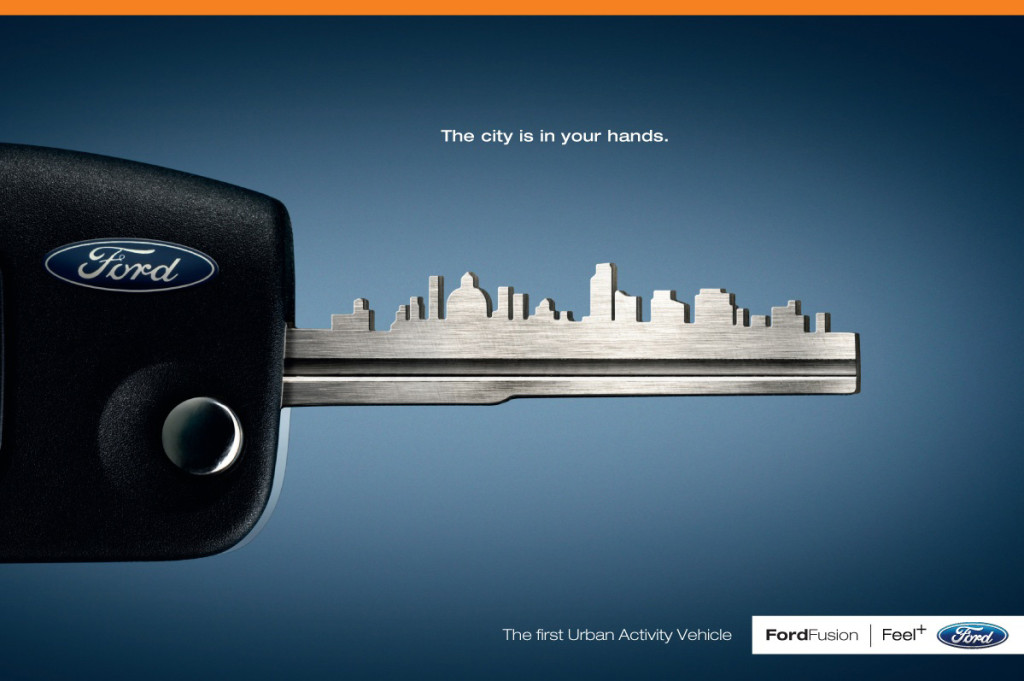The neon lights, enormous animated screens, blaring horns, mangled traffic, crowded sidewalks and confusion of Times Square adequately describes how disorienting information overload can be. Parallels can be made to advertisements as well as retail and online experiences that cause the brain to work too hard in determining what’s happening and what’s important to understand. For example, Yahoo is rife with content whereas Google is incredibly minimal; it’s no wonder why Google is the most trafficked search engine in the world. Smart brands will make it easy for consumers to focus on a product and say yes to a purchase. Neuroscience offers some subtle tips on how to best guide consumer decision making from a visual design vantage point. We will cover three tactics to help busy brains joyfully cut through the noise.
1) Clear the Clutter and Get to the Point. Ruthlessly editing out superfluous information or imagery in an advertisement or ecommerce page empowers consumers (Coughter, 2012). Our brains are drawn to simplicity and are also wired to seek reward (Lindsay, 2015a). When information is presented basically, we quickly comprehend it and make decisions that yield greater confidence, affirmation and happiness. This type of courteous user experience will make consumers feel great about themselves and a brand as a result.
2) Pictures are Powerful. Compelling imagery directs neurological focus toward the content that matters (Lindsay, 2015b). A viewer’s attention is first captured by an image and the brain follows a natural pathway of exploration around this area of focus. Correspondingly, important copy or an abbreviated call to action should correlate with an image. Kevin Lindsay (2015b), Head of Product Marketing for Adobe Target, furthers this point, “Images are so powerful, in fact, that just having one adjacent to text makes that written content more believable—even if that visual has zero to do with what the words say” (para. 13). In many ways, the content consumption habits of Generation Z prove that imagery reigns supreme and written copy is secondary; marketers should tune into this insight to guide future strategy (Abramovich, 2016).
3) Put on a Happy Face. Emotions are neurologically contagious (Wild, Erb, & Bartels, 2001). This is most evident through facial expressions. The mere visual of a happy person can transform the mood or the brand perceptions of a consumer, mirroring the happiness they see (Harada, Hayashi, Sadato, & Iidaka, 2016). On the other hand, an angry face can trigger a different area of the brain associated with fear and threat (Harada et al., 2016). Marketers should be cognizant of this when choosing imagery for advertisements or point of sale creatives. A happy face can nudge the reward center of the brain and positively influence the consumer decision-making process (Harada et al., 2106).
Here’s a fun video on brain reactions to facial expressions from BrainCraft.
Overall, our world is filled with an overwhelming amount of stimulus. Wouldn’t it be nice if consumers felt like their interactions and engagement with a brand were a breath of fresh air, a clear blue sky of aspiration and discovery? That approach, coupled with subtle cues of happiness, will likely result in more brand love and increased revenue.
Thank you for reading,
Lydia
References
Abramovich, G. (2016). Marketing To Gen Z? No Better Time To Get ‘Emojinal’. CMO.com. Retrieved from http://www.cmo.com/features/articles/2016/9/21/marketers-targeting-youth-need-to-get-emojinal-yms-conference.html#gs.null
Coughter, P. (2012). The art of the pitch: Persuasion and presentation skills that win business. Palgrave Macmillan.
Harada, T., Hayashi, A., Sadato, N., & Iidaka, T. (2016). Neural correlates of emotional contagion induced by happy and sad expressions. Journal of Psychophysiology, 30(3), 114-123. doi:10.1027/0269-8803/a000160
Lindsay, K. (2015a). How to leverage decision science to drive consumer action (part 1). CMO.com. Retrieved from http://www.cmo.com/opinion/articles/2015/5/14/how-to-leverage-decision-science-to-drive-consumer-action-part-1.html#gs.CS9Eveg
Lindsay, K. (2015b). How to leverage decision science (part 2). CMO.com. Retrieved from http://www.cmo.com/opinion/articles/2015/5/26/how-to-leverage-decision-science-part-2.html#gs.null
Wild, B., Erb, M., & Bartels, M. (2001). Are emotions contagious? Evoked emotions while viewing emotionally expressive faces: quality, quantity, time course and gender differences. Psychiatry research, 102(2), 109-124.





4 Responses to Neuroscience + Visual Design: Three Tactics to Simplify Consumer Decision Making